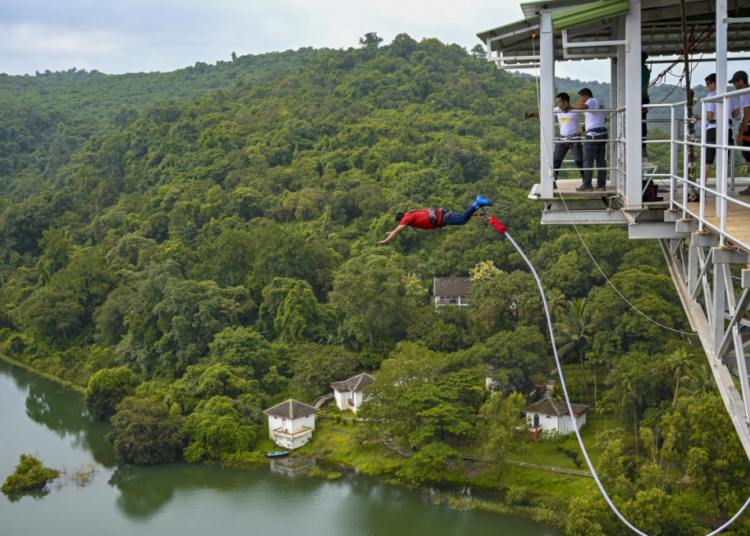It looks at how advancements in technology are changing the way we experience adventure tourism and what we can expect in the years to come.
Introduction: Adventure tourism has grown significantly over the past few decades, with more and more people seeking unique and exhilarating experiences in the great outdoors. At the same time, technology has advanced rapidly, revolutionizing the way we live, work, and play.
The intersection of adventure tourism and technology is an exciting space that is transforming the industry and opening up new possibilities for adventure seekers. In this article, we will explore the future of adventure tourism and technology, and how these two worlds are coming together to shape the industry.
Virtual Reality
Virtual reality (VR) is a technology that is transforming the way we experience adventure tourism. With VR, it is possible to create immersive and interactive experiences that transport users to remote and exotic locations.

For example, a person can experience white-water rafting without ever leaving their living room. VR is a game-changer for the industry, as it allows people to experience adventure tourism in a way that was previously impossible.
Augmented Reality
Augmented reality (AR) is another technology that is changing the way we experience adventure tourism. With AR, it is possible to overlay digital information in the real world. For example, hikers can use AR to identify different plant and animal species on a nature trail. AR is also being used to create interactive experiences that add an element of adventure to sightseeing.
Wearable Technology
Wearable technology is another area where adventure tourism are intersecting. From smartwatches to fitness trackers, wearable technology is changing the way we track our physical activity and monitor our health. For adventure tourists, wearable technology is providing new ways to measure and monitor their performance, track their routes, and share their experiences with others.
Drones
Drones are revolutionizing the way we explore the great outdoors. With drones, it is possible to capture stunning aerial footage of remote and hard-to-reach locations. Drones are being used by adventure tourism operators to provide customers with a bird’s eye view of the landscape and to create immersive and engaging experiences.
Artificial Intelligence
Artificial intelligence (AI) is also playing a role in the future of adventure tourism. AI is being used to personalize experiences, provide real-time recommendations, and enhance safety. For example, AI-powered chatbots can help adventure tourists plan their trips, answer their questions, and provide them with information about their destination.
Sustainable Tourism
Sustainable tourism is a growing trend in adventure tourism and is playing a key role in making it possible. From renewable energy solutions to eco-friendly transportation, technology is helping adventure tourism operators reduce their environmental footprint and create more sustainable and responsible travel experiences.
5G Connectivity
5G connectivity is another technology that is set to transform the future of adventure tourism. With faster and more reliable internet speeds, adventure tourists will be able to stay connected and share their experiences in real time. 5G connectivity will also make it possible to create more immersive and interactive experiences that rely on real-time data and feedback.
Personalized Experiences
Technology is enabling adventure tourism operators to create more personalized experiences for their customers. From customized itineraries to tailored recommendations, technology is helping operators create experiences that meet the specific needs and preferences of individual travelers.
Big Data Analytics

Big data analytics is another area where technology is having an impact on the future of adventure tourism. With big data, adventure tourism operators can analyze customer behavior and preferences, track trends, and make data-driven decisions that enhance the customer experience.
Conclusion
The future of adventure tourism is an exciting and rapidly evolving space. As technology continues to advance, we can expect to see more innovation and new possibilities in adventure tourism.
From virtual reality to drones and artificial intelligence, these technologies are enabling adventure tourism operators to create unique and personalized experiences that meet the needs and preferences of individual travelers.
At the same time, it’s important to keep in mind the impact that technology can have on the environment and local communities. As adventure tourism continues to grow, it’s essential that operators and travelers alike are mindful of their impact on the places they visit.
In conclusion, the intersection of adventure tourism is a fascinating space that is changing the way we experience the great outdoors. With new technologies on the horizon, we can expect to see even more innovation and exciting possibilities in the years to come.
As long as we continue to prioritize sustainability and responsible travel, adventure tourism and technology can work together to create unforgettable experiences for adventure seekers around the world.



